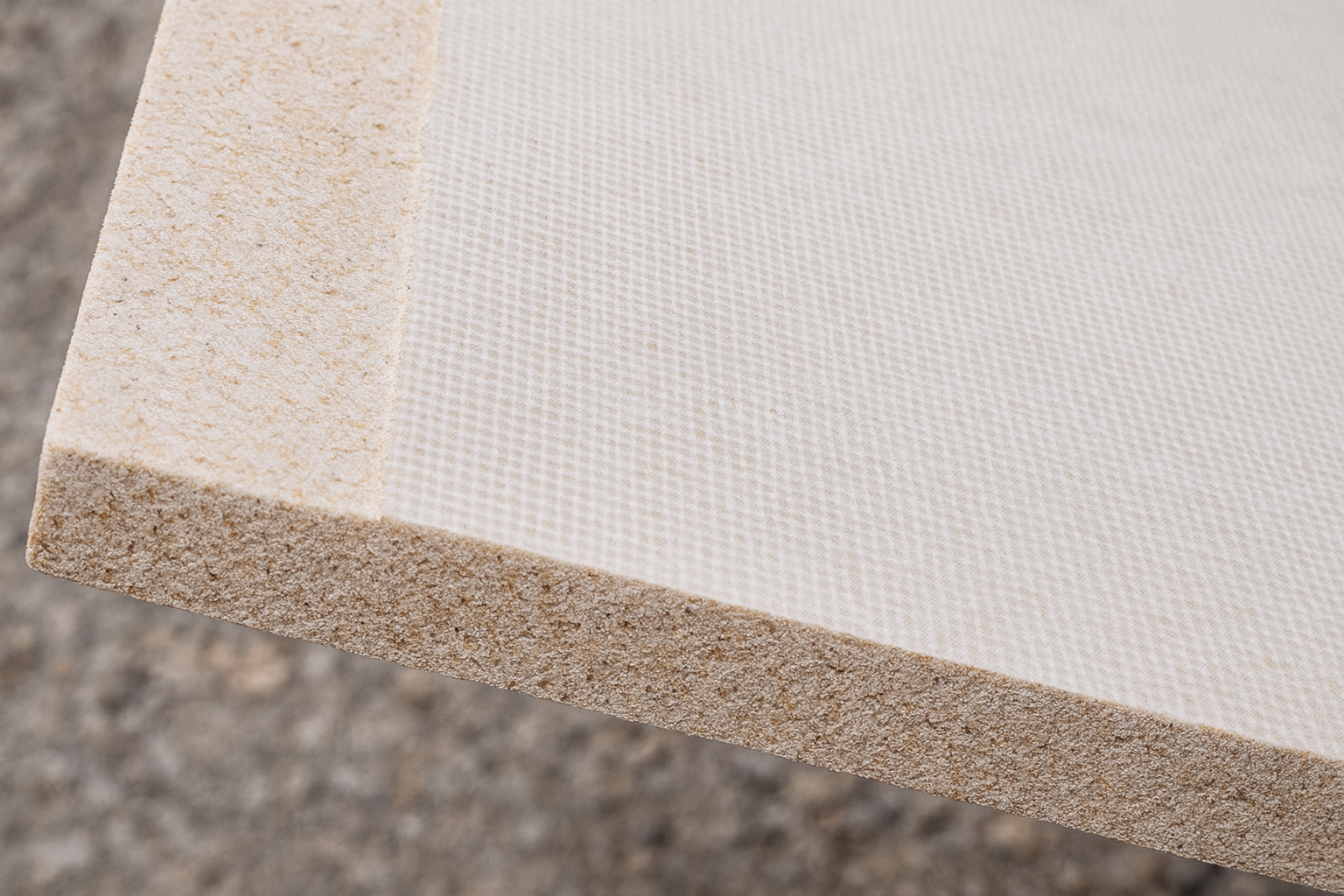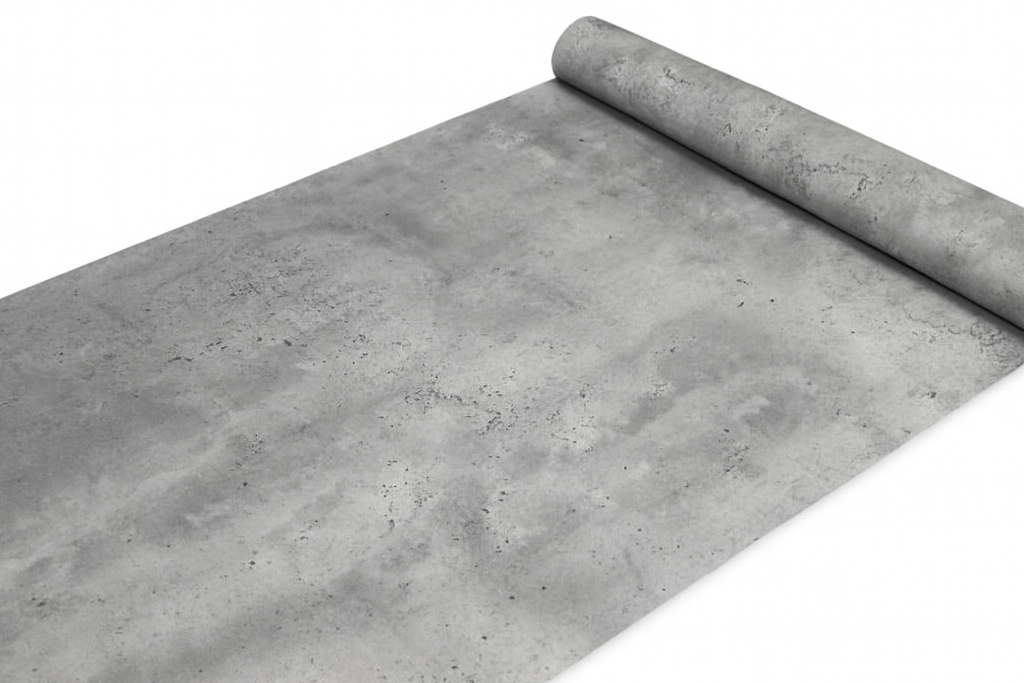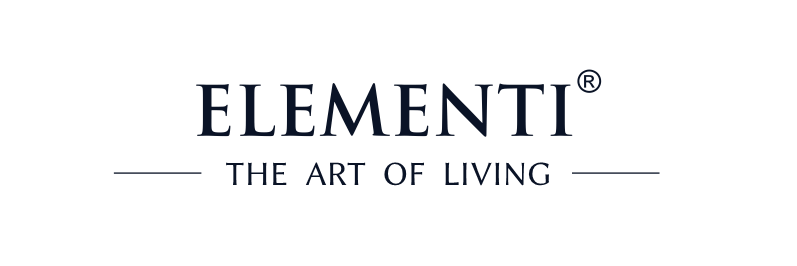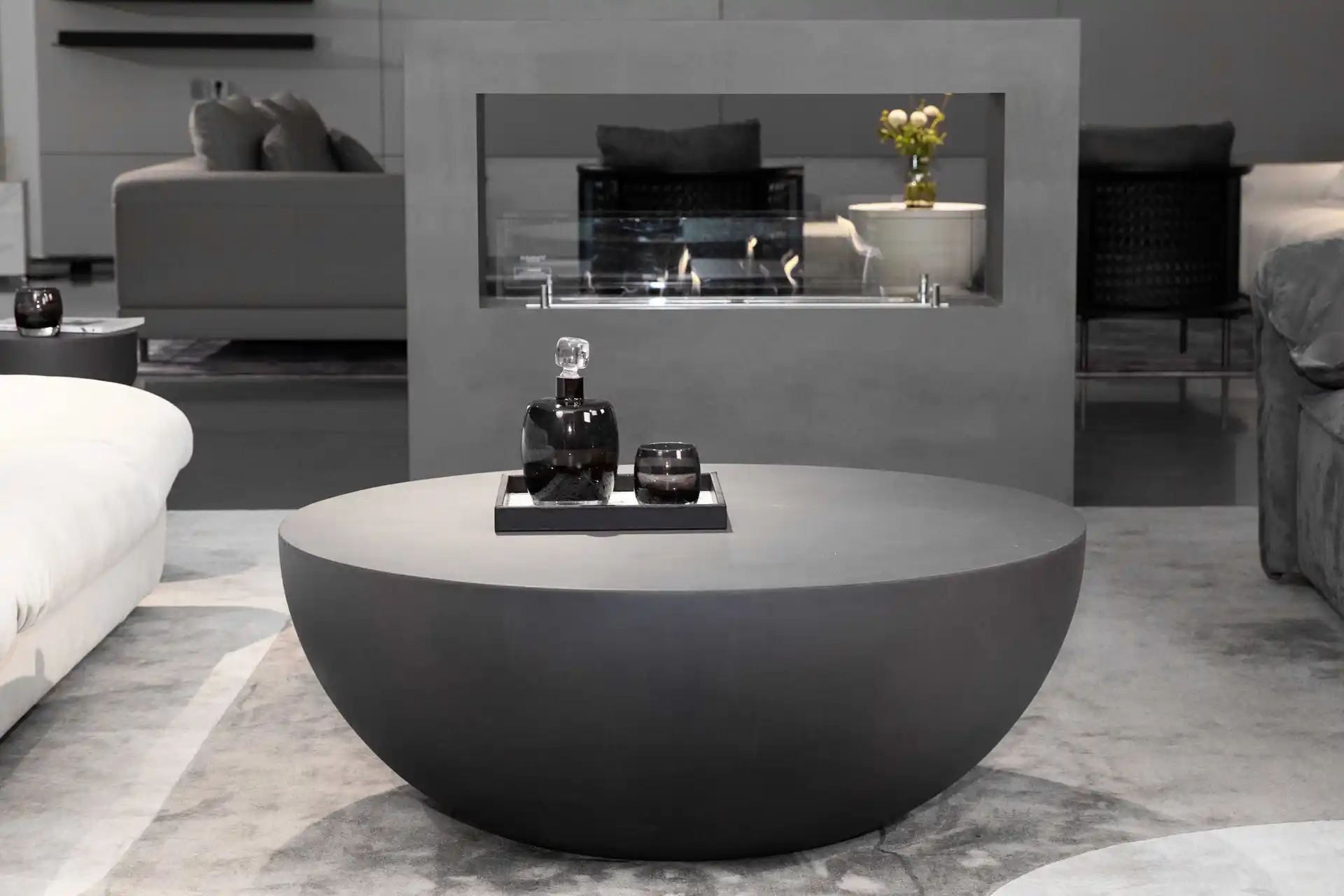Concrete furniture is no longer just a topic for architecture magazines or design showrooms. It has become an integral part of modern home and garden design and can be found in living rooms, on terraces, in gardens, hotels, restaurants and vacation homes. Furniture made of GF concrete (glass fiber reinforced concrete) in particular is becoming increasingly important because it combines raw aesthetics with high suitability for everyday use. is becoming increasingly important because it combines the raw aesthetics of Beton with high suitability for everyday use. In this guide you can find out which materials are behind concrete furniture, what advantages they offer and in which areas they can be used particularly effectively.

1 What is concrete furniture?
Concrete furniture refers to pieces of furniture in which Beton or a concrete look is the defining design element. This includes coffee tables, side tables, benches, dining tables, sideboards, shelves or outdoor furniture that is either made entirely of Beton or combines concrete with other materials. The decisive factor is the character: a mineral, calm surface with clear lines or organic shapes that radiate stability and value.
It is important to differentiate between real concrete, modern variants such as GF concrete, MGO and various concrete-look surfaces. Depending on the material, the weight, robustness, area of application and maintenance requirements differ significantly.
2 Materials at a glance
Not every “concrete table” has the same structure. For selection and subsequent use, it is crucial to know the different types of material. The following table provides a comprehensive overview of the most important variants – from real concrete to light decorative surfaces with a concrete look.
| material | Material properties | Typical areas of application |
|---|---|---|
| GF concrete(glass fiber reinforced Beton) | High strength, significantly lighter than solid Beton; malleable, weatherproof, durable; ideal for precise or organic designs | High-quality coffee tables, side tables, outdoor furniture, designer pieces |
| Classic Beton | Very heavy, extremely robust, high compressive strength; architectural character, but not very flexible in terms of shaping and transportation | Fixed benches, outdoor blocks, wall elements, solid tables |
| MGO(Magnesium Oxide) | Lighter than Beton; good basic stability; less pressure-resistant; surface usually coated ; limited weather resistance | Lightweight indoor/protected outdoor furniture, price-conscious concrete-look products |
| Concrete decor panels | MDF/chipboard with concrete-look coating; very light; impressive appearance, but limited robustness | Indoor furniture, sideboards, shelves, decorative table tops |
| Furniture foils / decorative foils | Very light and inexpensive; purely decorative; no mineral structure; not heat- or impact-resistant | Decorative fronts, visual concrete accents, lightweight interior furniture |
| Filler technique / mineral concrete look | Thin mineral coating on wood/metal; realistic feel; low weight; Robustness depends on sealing | Indoor tables, wall shelves, decorative furniture with concrete look |
2.1 GF concrete(glass fiber reinforced Beton)

GF-Beton is the highest quality and most modern solution in the Beton furniture sector. By reinforcing it with glass fibers , the material thickness can be greatly reduced without compromising stability. This results in furniture that is significantly lighter than solid Beton and at the same time allows for more complex shapes.
Advantages: Excellent strength, durable, weatherproof, break-resistant, ideal for precise or organic designs. Perfectly suited for outdoor and sophisticated interior design.
Disadvantages: More complex production; higher costs than simple concrete-look surfaces; quality dependent on the manufacturer’s expertise.
Price level: Medium to high – depending on shape, size and craftsmanship.
Technology: Mineral mixture with glass fibers; multi-layer structure; high-quality sealant for UV and water protection.
2.2 Classic Beton

Classic Beton is extremely robust and has an architectural appearance. Due to its high weight, it is particularly suitable for permanently installed furniture, seating blocks or outdoor elements that are intended to stand permanently in one place .
Advantages: Very high compressive strength, solid appearance, indestructible stability.
Disadvantages: Extremely heavy; difficult to transport; more sensitive to cracking in frost; little flexibility in shaping.
Price level: Medium – material is cheap, but transportation and formwork are expensive.
Technology: solid casting with cement base; high mass; drying and curing processes are decisive for quality.
2.3 MGO(Magnesium Oxide)

MGO is a lightweight mineral material that is often used for cheaper concrete-look furniture. The visual appearance is often clean and uniform, but does not achieve the depth and authenticity of real Beton.
Advantages: Very light, inexpensive, easy to shape, ideal for indoors or sheltered outdoor areas.
Disadvantages: Less pressure-resistant than Beton; more sensitive edges; potential weaknesses due to weathering; surfaces often only painted.
Price level: Low to medium.
Technology: Magnesium oxide mixtures, often reinforced with synthetic resins; optical concrete coating on top.
2.4 Concrete decor panels

Concrete decor panels combine wood-based materials such as MDF or chipboard with a decorative surface in a concrete look. They are extremely lightweight and are ideal for indoor areas where design is paramount.
Advantages: Very light, cost-efficient, uniform concrete look, ideal for decorative furniture.
Disadvantages: Not suitable for outdoor use; limited impact resistance; moisture can damage the backing material .
Price level: Low.
Technology: Wood-based core + laminate, foil or mineral decorative layer.
2.5 Furniture foils and decorative foils
Decorative foils are used to create a purely visual concrete effect. They are particularly popular for price-conscious furniture or DIY projects where appearance is more important than functionality.
Advantages: Very inexpensive, extremely light, large variety of patterns.
Disadvantages: No real mineral structure; sensitive to scratches, heat and moisture; not suitable for outdoor use.
Price level: Very low.
Technology: PVC/vinyl-based, self-adhesive, purely decorative.
2.6 Filler technique / mineral concrete look

With the spatula technique, a thin mineral layer is applied to wood or metal. The feel and look are significantly more authentic than with foils and decorative panels, while the weight remains low.
Advantages: Realistic concrete feel, can be customized, lighter than solid concrete.
Disadvantages: Durability depends on sealing; more sensitive to heavy loads; Weather resistance varies greatly.
Price level: Medium.
Technique: Multi-layer application work with mineral filler + sealer.
3 Advantages of concrete furniture
Concrete furniture combines robustness, timeless aesthetics and long-lasting material quality. It adapts to many furnishing styles – from minimalist to Mediterranean – and radiates calm, stability and value.
3.1 Robustness and durability
Real Beton and GF concrete are extremely resistant to knocks, scratches and loads. In comparison to wooden or plastic furniture, they retain their shape and effect even after years of use.
3.2 Weatherproof for outdoor use
GF Beton is ideal for outdoor areas. With the right sealant, the furniture can withstand sun, rain, frost and temperature fluctuations – ideal for terraces, roof gardens and pool areas.
3.3 Timeless aesthetics
The calm, mineral surface of Beton looks modern and natural at the same time. Concrete furniture can be combined with wood, metal, textiles and many decors to create a harmonious overall look.
3.4 Sustainability
A durable piece of concrete furniture replaces many short-lived alternatives. GF concrete in particular requires less material than solid Beton and offers a long service life – an advantage in sustainable furnishing concepts.
4 Possible uses for concrete furniture
Concrete furniture is suitable for almost all living and outdoor areas. They can be a design focal point or an unobtrusive addition, depending on their shape and placement.
4.1 Living room: coffee tables and living room tables
Coffee tables made of GF Beton are popular because they are stable, visually calm and durable. Round or organic shapes look harmonious, while angular versions emphasize an architectural spatial effect.
4.2 Outdoor area: garden and lounge furniture
The advantages of Beton are particularly evident in outdoor areas. Garden and lounge tables made of GF Beton are stable, weatherproof and an excellent addition to outdoor seating areas. They are ideal for storing drinks, snacks or decorations.
4.3 Commercial use
In hotels, restaurants and vacation resorts, concrete furniture impresses with its robustness and professional effect. It withstands intensive use and gives rooms a high-quality atmosphere.
5 More on purchasing criteria & care of concrete furniture
You can find all the important information on selection, material quality and proper care here:
👉 To the complete concrete furniture guide
6 FAQ – Concrete furniture, materials & care
What is the difference between GF concrete and classic Beton?
Classic Beton is solid, very heavy and is usually used for permanently installed elements such as seat blocks or walls. GF concrete(glass fiber reinforced Beton) is reinforced with glass fibers, making it thinner-walled, significantly lighter and yet stable. It is ideal for furniture that needs to be suitable for everyday use in terms of shape and weight.
Which concrete materials are suitable for outdoor use?
GF concrete and high-quality classic Beton are particularly suitable for year-round outdoor use, provided they are professionally processed and sealed . MGO, concrete decor panels, furniture foils and filler techniques are more suitable for indoor or protected areas, as they are less pressure-resistant or weather-resistant.
Is concrete furniture always very heavy?
Furniture made of classic solid concrete is actually very heavy and hardly flexible to move. GF concrete and thin-layer filling techniques significantly reduce the weight without changing the appearance. The result is concrete furniture that is stable, but can still be moved or transported.
What role do concrete decor panels, foils and spatula technology play?
Concrete decor panels (MDF/chipboard with a concrete look), furniture foils and filler techniques create a concrete look without the furniture being made entirely of concrete. They are ideal for visual accents in the interior, but do not achieve the robustness and durability of real GF concrete or classic Beton.
How do I care for concrete furniture properly?
In everyday life, it is sufficient to clean the surface with a soft cloth and mild detergent at . Aggressive chemicals or abrasive cleaners should be avoided. For outdoor furniture made of Beton or GF concrete, a suitable sealer or impregnation is recommended to reduce water absorption and stains to protect the surface in the long term.
Are color and texture differences in concrete furniture normal?
Yes. Slight color variations, shading, fine pores and different textures are typical characteristics of Beton and GF concrete. It is precisely these irregularities that make each piece of furniture visually unique and underline the character of a natural mineral material.
Which material is the best choice for durable concrete furniture?
For high-quality, durable furniture with a real concrete feel, GF concrete is generally the best choice: robust, dimensionally stable, suitable for outdoor use and visually very close to solid beton – with significantly better suitability for everyday use. If you only want a visual concrete touch in the interior, you can fall back on concrete decor panels or filling techniques .












